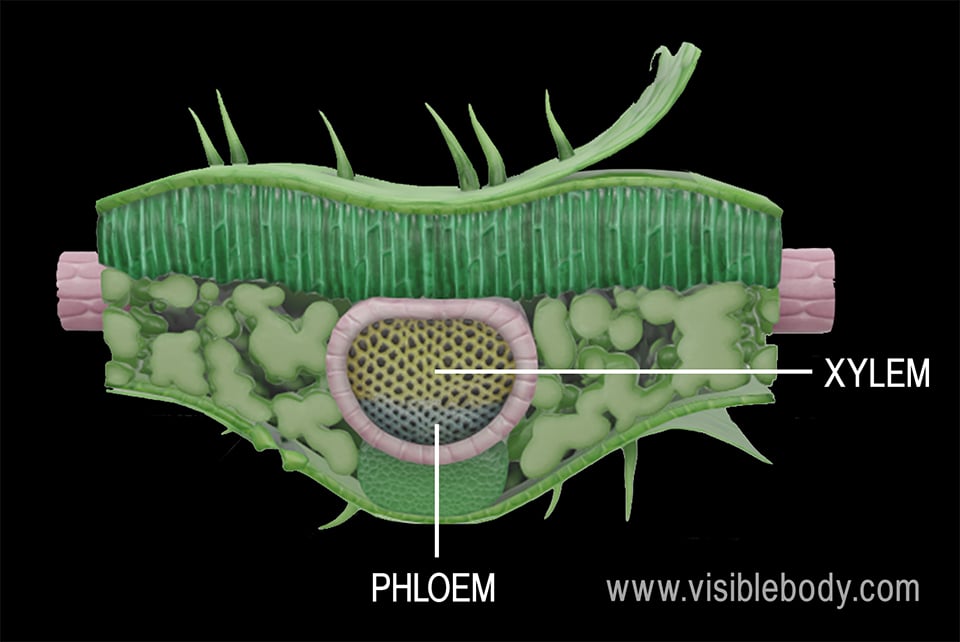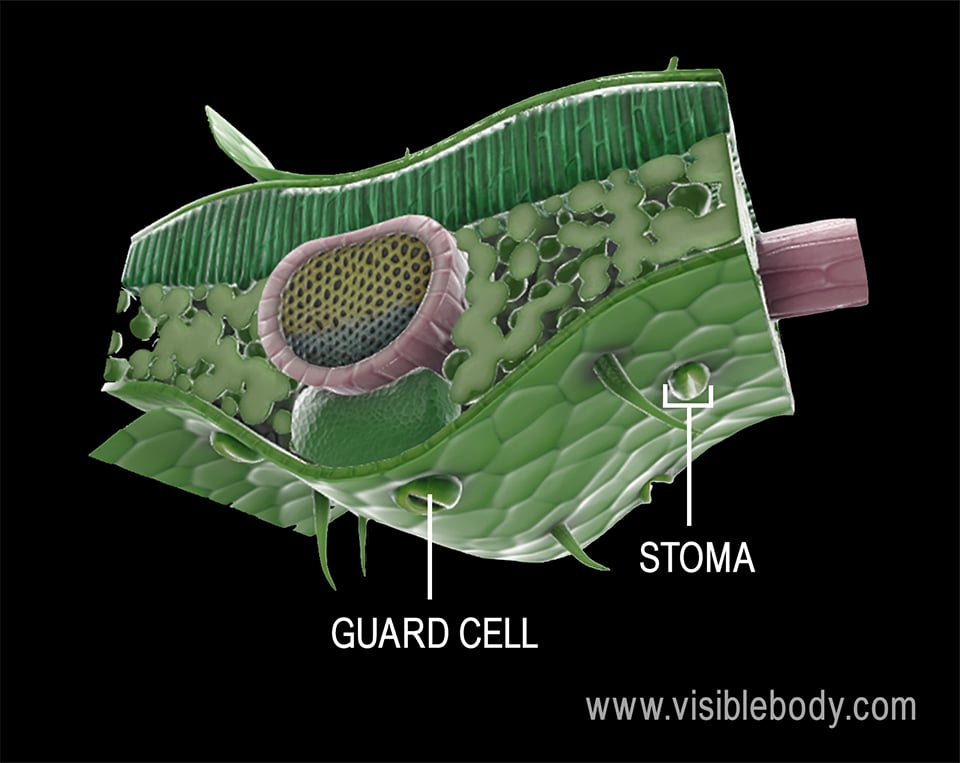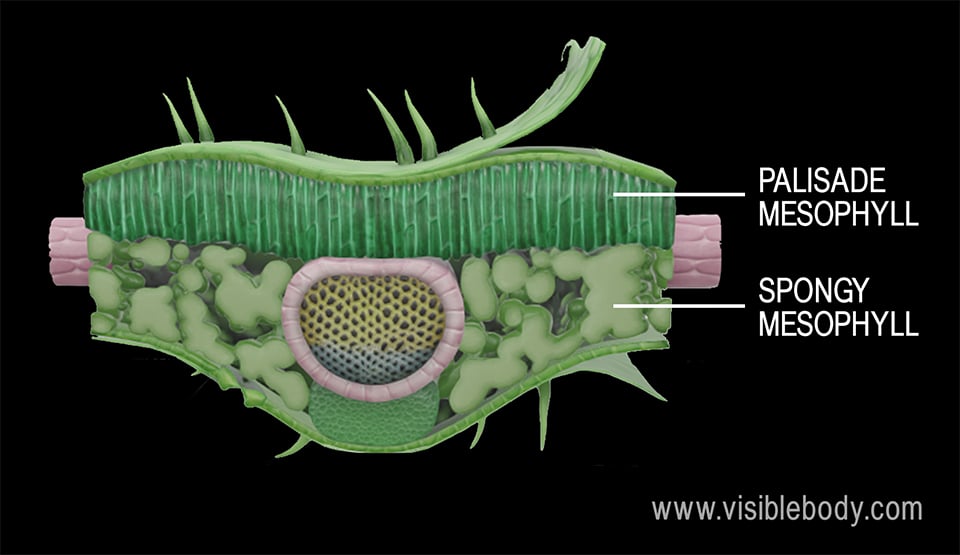When it comes to photosynthesis, the most important parts of the plant are the leaves. Their cells and structures are specialized to take in light and allow for gas exchange with the air around them. They also contain vascular structures that transport water from the roots into the cells that carry out photosynthesis.
Anyone who cares for plants could probably tell you that pouring water directly onto the leaves isn’t the best idea. Plants absorb water from the soil, using their roots.
As you probably already know, water is necessary for photosynthesis, which primarily occurs in the plant’s leaves. You might wonder how the water gets from the roots into the leaves, and the answer is through the plant’s vascular system! Just like the veins and arteries that circulate blood throughout our bodies, the plant’s vascular tissues move water, nutrients, and the products of photosynthesis throughout the plant.

When a plant’s roots absorb water and nutrients from the soil, these materials move up the stem and into the leaves through the xylem. Capillary action—which relies on liquid’s properties of cohesion, surface tension, and adhesion—is what allows water to “defy gravity” as it travels through the xylem and into the leaves.
Once photosynthesis has occurred, the produced sugars move through the phloem to other parts of the plant to be used in cellular respiration or stored for later.
We may not be able to see them with the naked eye, but the leaves of plants contain tons of tiny holes, or pores, called stomata (sing. stoma). They play a central role in photosynthesis, allowing carbon dioxide to enter the leaf and oxygen to exit the leaf. The stomata also facilitate transpiration, the process by which water vapor is released through a plant’s leaves.

The stomata can be opened and closed, depending on the turgor pressure—the pressure of a cell’s contents against the cell wall—in the two guard cells that border each stoma. High turgor pressure causes these cells to bend outward, opening the stomatal pore. Low turgor pressure, due to loss of water, keeps the stomatal pores closed.
In leaves, cells in the mesophyll (the tissue between the upper and lower epidermis) are uniquely suited to carry out photosynthesis on a large scale. This is due to their high concentration of chloroplasts, which are the sites of photosynthesis. More chloroplasts means more photosynthetic capability.
Certain types of plants (dicots and some net-veined monocots) have two different types of mesophyll tissue. Palisade mesophyll cells are densely packed together, whereas spongy mesophyll cells are arranged more loosely to allow gases to pass through them. Palisade mesophyll cells also have more chloroplasts than spongy mesophyll cells.

A fun and easy activity from Scientific American that allows you to observe capillary action.
An OSU page explaining turgor pressure inside plant cells.
An article on transpiration and the water cycle from the USGS.
When you select "Subscribe" you will start receiving our email newsletter. Use the links at the bottom of any email to manage the type of emails you receive or to unsubscribe. See our privacy policy for additional details.